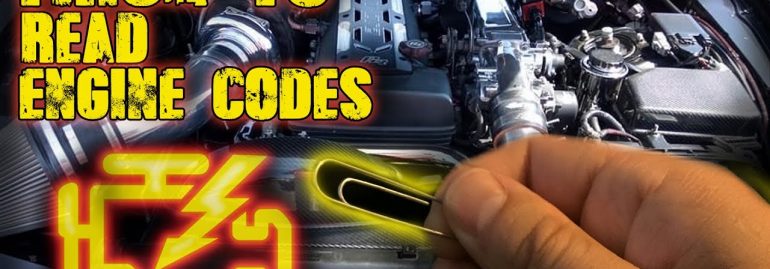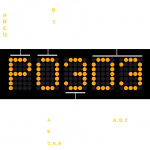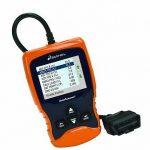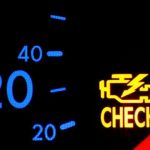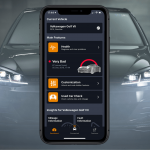
If you’ve ever wanted to learn how to read DTC codes, you’ve come to the right place. This article outlines the different types of codes and how to interpret them. The information in this article is intended for beginners, but it will also benefit experienced mechanics. It will also give you a better understanding of how to interpret OBD2 diagnostic codes. Read on to learn how to decode DTC codes and how to read them in your car.
OBD2 diagnostics
When it comes to diagnosing problems in your car, OBD2 diagnostics are an absolute must. These systems are required by law on new cars manufactured after 1996 in the USA and are used to monitor and diagnose a wide range of parameters related to the vehicle’s emissions, battery performance, and other issues. The Powertrain Control Module (PCM) stores trouble codes and uses these to analyze the health of the car’s internal systems. The information collected from these diagnostics can help you understand what’s going on in your car, so you can fix the issue before it leads to costly damage.
A professional OBD2 scan tool connects to the car’s OBD2 port through a wire and can diagnose nearly anything about the car. However, it can cost thousands of dollars, making it out of the reach of most home hobbyists. It is also not uncommon for a repair shop to charge you $100 or more for diagnostics, mainly because they’ve made a huge investment in purchasing the scan tool.
The cheapest OBD2 scan tool is the ELM327 wireless scanner, which costs about $20. You’ll need to install the software to connect to your car, but it’s an excellent option for a quick and cheap way to diagnose problems. You can also purchase apps that use this data to help you maintain your car. You can use these apps to get detailed information about your car’s internals, such as fuel consumption and emissions.
There are two primary types of OBD2 diagnostics: the first type of scan is used to diagnose malfunctions in the engine. It provides diagnostic information that can help a technician determine which type of diagnostics are required. Depending on the type of car, it may also be possible to diagnose an engine problem without the help of a professional. When you perform an OBD diagnostic, it’s important to know the fault code.
OBD scan tools are easy to use and get to the heart of a car’s internal systems. These tools dig deep into a vehicle’s system and display hundreds of faults, performance, and health data. This information can save you money and time and prevent costly repairs. The OBD scan tool can even prevent a future brake-down. Its port is located on the driver’s side, under the steering wheel.
Wireless OBD scanners are a good option if you don’t want to leave your home. Wireless scanners can also be used with your smartphone. Almost every new gas and diesel car has an OBD2 port, so you can use one for your car and even your smartphone. To make sure that you have one of these scan tools, take the compatibility quiz. You’ll need to provide your car’s VIN. Once you have this information, you can begin scanning your engine for fault codes.
Types of dtc codes
Diagnostic trouble codes (DTCs) come in different varieties. For example, the first digit is generic and covers a variety of systems and functions. The next digit is a subsystem. A generic code is a general error, while a manufacturer-specific code is a more specific fault. If you’re unsure which type of DTC you’re seeing, check your owner’s manual or check online for a diagnostic report.
A normal DTC error is a non-urgent code. This error shows up in the check-codes window of your car. If you’re seeing a normal DTC error, don’t panic. You don’t have to call a mechanic. Simply pull out your vehicle’s manual and search for the appropriate code. Some DTCs are temporary, while others require repair. To find out which type of DTC you’re experiencing, consult the manufacturer’s manual or your car owner’s manual.
While some problems don’t generate trouble codes, they can indicate more serious problems. Some DTCs simply indicate a sensor circuit is out of range or an emissions control system is malfunctioning. To read a DTC, you need to know where it’s stored in your vehicle. Most vehicles store trouble codes in either the Engine Control Module (ECM) or Powertrain Control Module (PCM).
In the past, vehicle manufacturers used a variety of onboard diagnostics systems. Light-duty vehicles use OBD-II while heavy-duty vehicles and heavy-duty equipment use J1939. Now, the DTC list contains common codes for various car models. In addition, manufacturers can create their own DTC codes based on model specifications. This way, a DTC will be relevant to a specific vehicle model.
In addition to a DTC, a car’s dashboard may display a warning light to indicate a problem. This is an indicator that something is wrong with the vehicle and requires immediate attention. The MIL is just one of the many DTCs that can affect your car’s emissions or turn on your airbags. The diagnostic tool will display the error code when it’s detected. So knowing what DTC codes mean will help you determine the cause of the problem quickly.
While the first three types of DTCs are essentially similar, there are some differences between them. OBD-II codes are specific to a particular problem. While they might be related, they can still be related to a particular issue. For example, the check engine light might indicate a problem with the fuel system. Regardless of the cause, DTCs can be a useful tool for fleet management and vehicle tracking.
In addition to the types of DTCs that come from these faults, it’s important to understand the meaning of each of them. While these codes are five characters long, each digit represents a different component or part of the vehicle. For this reason, understanding the meaning of each DTC is necessary for diagnosing and fixing the problem. If you’re not familiar with DTCs, you can read through the service manual to understand what each one means.
How to read them
Whether you have a brand new car, or are having trouble with your old one, it’s helpful to learn how to read DTC codes. These codes indicate a number of different problems that can occur with your car. You’ll find that the warning light on the instrument panel will tell you if there’s a problem, as well as the type of problem. Luckily, these codes can often be decoded easily with an easy-to-use tool.
OBD scanners display DTC fault codes in numerical order. Often they also display a definition of each code. If yours doesn’t have a display, you can write down the code and read it later. It’s important to remember that every DTC code has a meaning. However, if you don’t have a scanner, you can write them down and use them to determine what the problem is with your car.
The P0128 code indicates that the engine coolant is below the temperature regulating thermostat. It is not a manufacturer-specific code and is a generic code. It can be interpreted according to the SAE definitions and identifies a problem with the fuel and air metering subsystem. The symptoms that the code indicates are often caused by a more serious problem. You should try to get to the bottom of the problem and work your way up.
The DTC code may also indicate a problem with a specific part of the car. Some of the parts that can contribute to this code are the engine speed sensor, transmission shift solenoid, vehicle speed sensor, and camshaft and crankshaft sensors. It can be confusing to read and interpret these codes. The service manual for your vehicle is a valuable tool for understanding your car and its fault codes. If you’re unfamiliar with DTC codes, don’t panic – your car will probably be fine in no time.
The P0300 DTC code is an indicator of a problem with the engine, transmission, or fuel system. It means that multiple cylinders may be randomly firing, indicating a problem with one or more of them. It’s common to encounter this code in conjunction with the P0301-P0308 codes. Another diagnostic trouble code is J1939. This code is five characters long and represents a specific problem with your car.
If you’re not confident in your ability to read DTC codes, take them to a repair shop for interpretation. In some cases, auto parts stores offer this service free of charge. Be careful, however: sales agents may try to sell you a spare part, so you may want to avoid this option if you don’t know what the code means. However, if you have the time, you can do it yourself – check out online to find out how to read DTC codes on your own.


